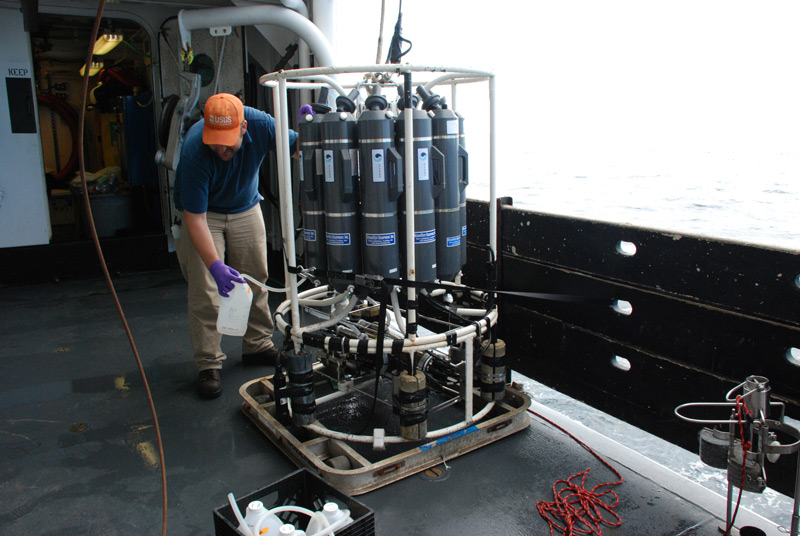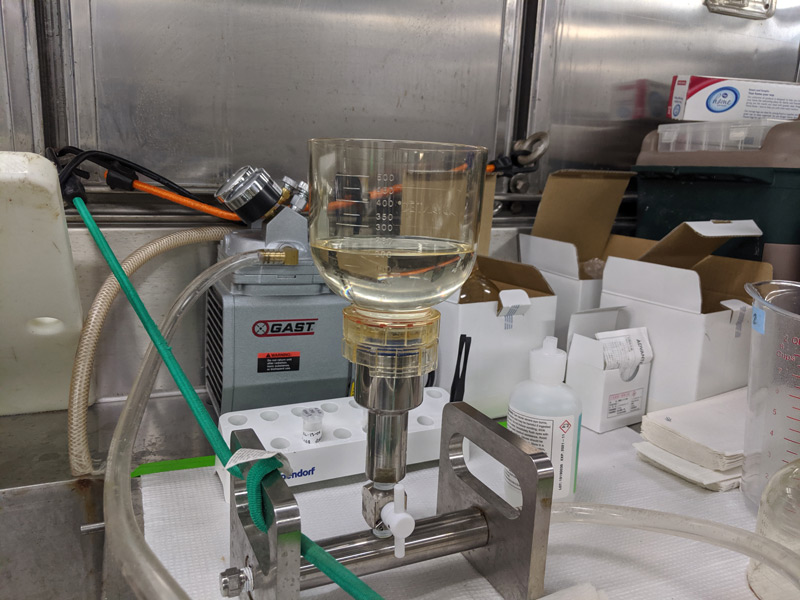
Katharine Egan, Physical Scientist, NOAA Ocean Exploration
Meredith Everett, Ph.D., Biologist, NOAA Northwest Fisheries Science Center
During the 2021 Technology Demonstration, we will be collecting water samples to detect environmental DNA, also known as “eDNA,” throughout the water column. eDNA is the genetic material that organisms leave behind in their environment (for example, in sediment or water). By collecting and analyzing this genetic material left behind, species can be identified within an environment without scientists ever having to see them. eDNA has many applications and is widely used at NOAA. It can be used to:

After recovering the CTD, a scientist attached a tube to each Niskin bottle and transferred collected water into plastic jugs where it was taken into the on-ship lab to be filtered for later analysis. Image courtesy of DEEP SEARCH 2017, NOAA-OER/BOEM/USGS. Download image (jpg, 4.4 MB).
eDNA analysis generally has four phases to it. First, environmental samples are collected: in our case, these are water samples. For the 2021 Technology Demonstration, we will collect water samples using the conductivity, temperature, and depth, or CTD rosette system. The CTD rosette is equipped with 12 Niskin bottles. These bottles are open when the rosette is deployed and can be triggered to close and capture water at certain depth intervals. Once the samples are collected, we will process the samples on the ship using a vacuum pump system to pull the water through a filter. By doing this, the DNA in the water (usually in the form of cells left behind by animals) will be captured on the filter, which can then be stored for analysis after the expedition.

Water filtering setup aboard NOAA Ship Reuben Lasker. Image courtesy of the Surveying Deep-sea Corals, Sponges, and Fish Habitat Off the U.S. West Coast expedition. Download image (jpg, 5.3 MB).
The last three steps of eDNA analysis generally take place in a laboratory setting. This includes the DNA extraction, sequencing, and bioinformatics analysis. During this last phase, we will generate data that will give us a better understanding of the species community composition along the Blake Plateau. After generating these results, NOAA Ocean Exploration will assess how well this technique worked and whether it should become a part of our standard ocean exploration operations going forward.